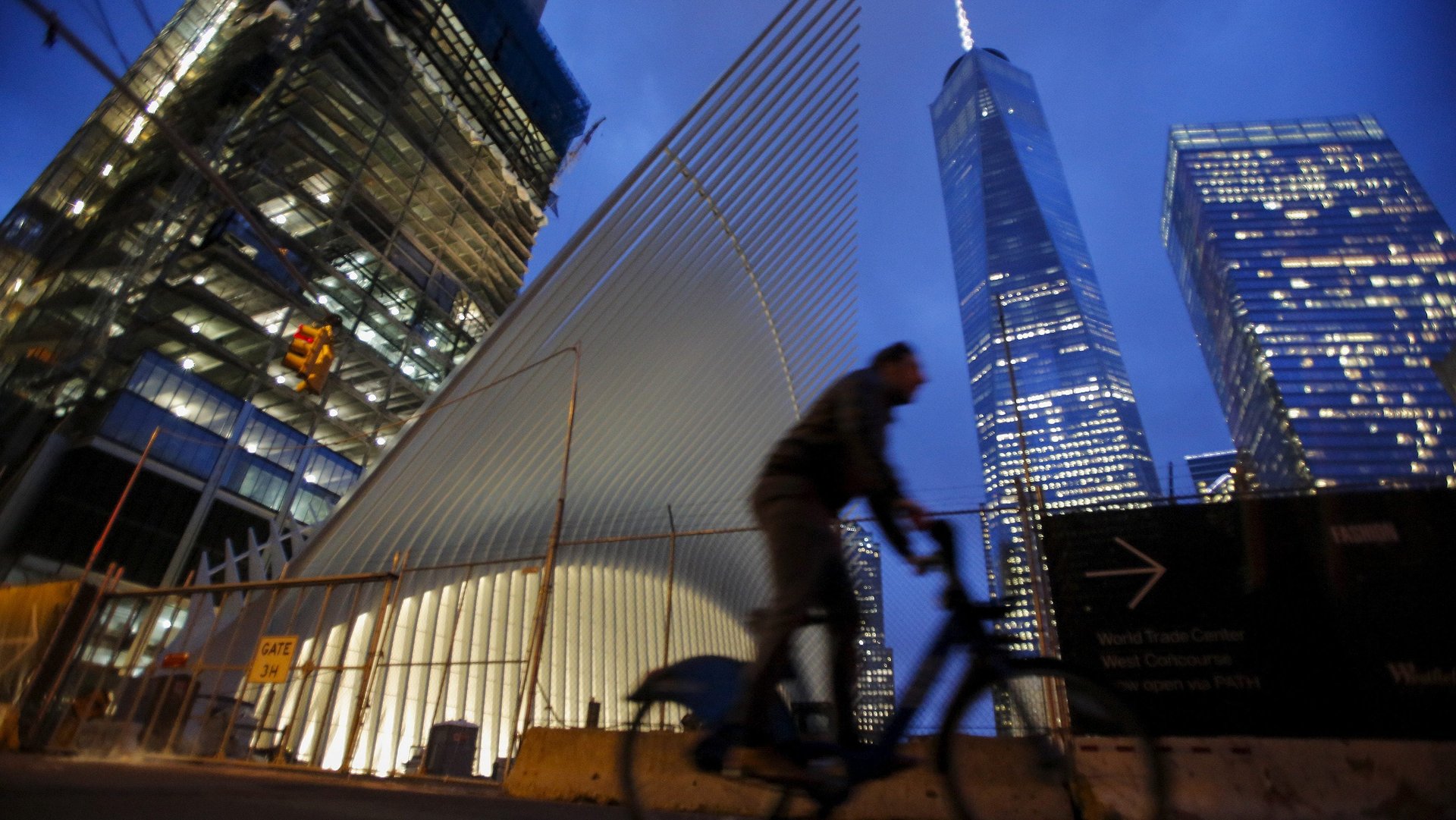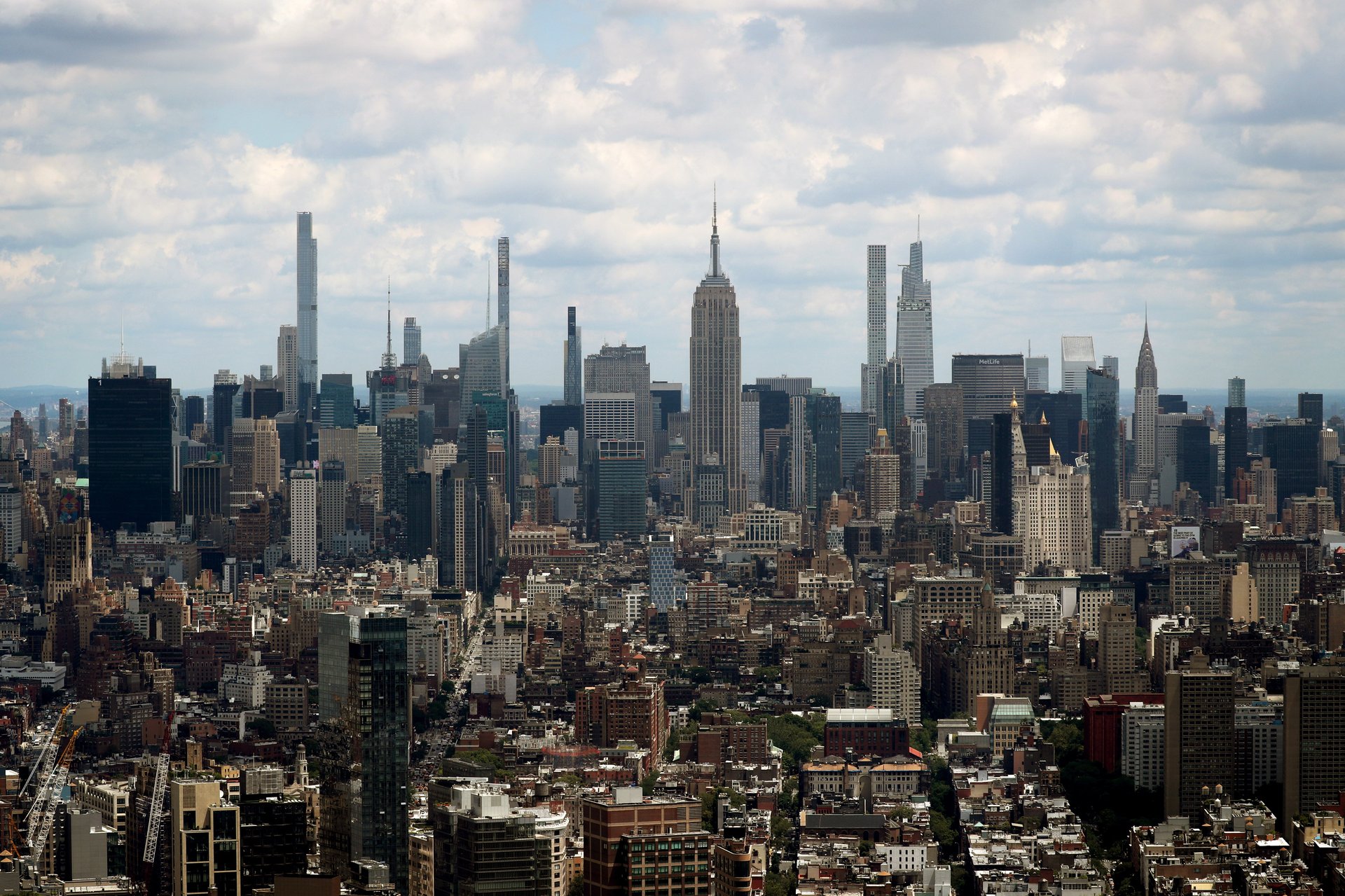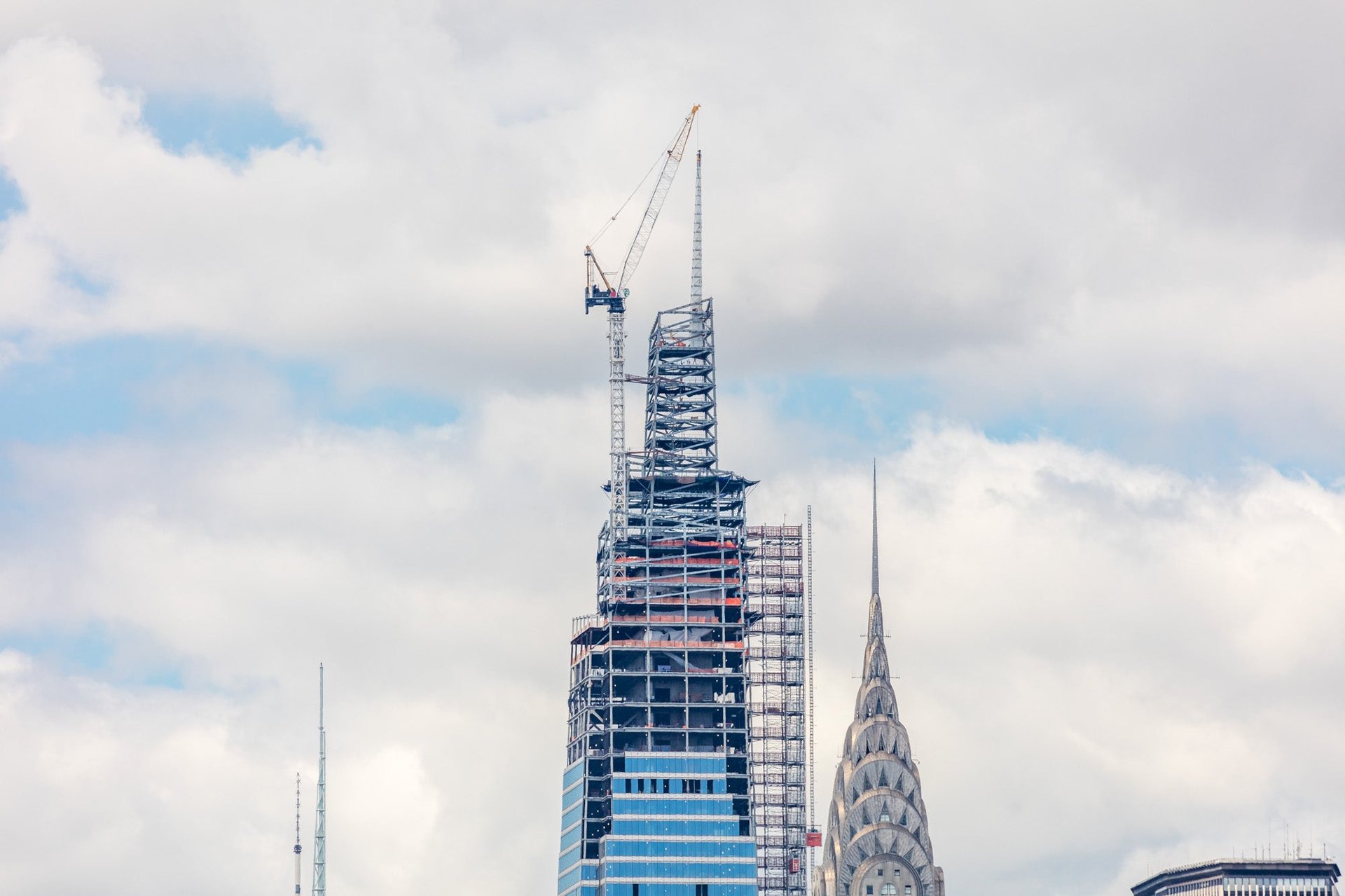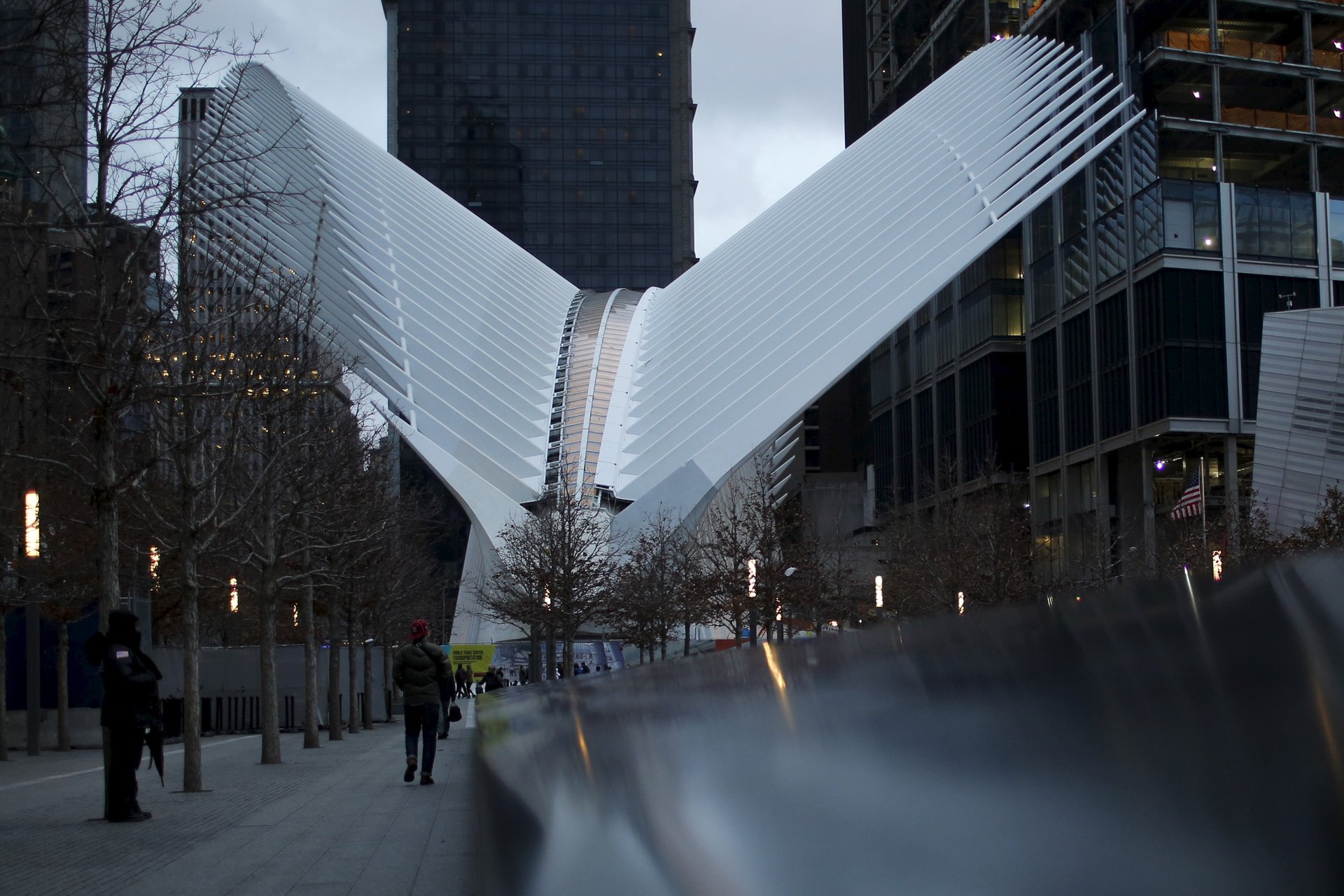The hard lessons of Sept. 11 led to the boom in supertall skyscrapers
After the Sept. 11 attacks, former New York’s mayor Rudy Giuliani encouraged developers to build low. Like many, he feared Manhattan’s tall buildings would become targets for terrorists, after seeing how swiftly the twin towers crumbled.


After the Sept. 11 attacks, former New York’s mayor Rudy Giuliani encouraged developers to build low. Like many, he feared Manhattan’s tall buildings would become targets for terrorists, after seeing how swiftly the twin towers crumbled.
Twenty years later, quite the opposite has happened. For better or worse, New York City’s skyline is populated with ever taller and taller skyscrapers, with the highest among them in the heart of the original World Trade Center complex. Nearly all of the city’s supertalls—the term for a structure that rises above 300 meters (984 ft)—were built after 2001. Many them are luxury condos clustered along 57th Street, two blocks south of Central Park.
Outside New York City, supertalls built after 2001 include the Trump International Hotel and Tower and the St. Regis in Chicago, theComcast Technology Center in Philadelphia, the Wilshire Grand Center in Los Angeles, and Salesforce Tower in San Francisco. Before Sept 11, there were 20 supertalls in the world. Today, there are more than 200 and several more are in various stages of construction.
How did Americans go from a mistrust of tall buildings to an unprecedented growth in skyscrapers in the US? In a word, science.
It stems from a steely belief in engineering innovation after the attacks, says Carl Galioto, president of the global design and architecture firm HOK. “I think it has to do with confidence,” he says.
Galioto would know. Prior to HOK, he was a partner at the firm Skidmore, Owings & Merril (SOM) and was an architect-of-record for two of the towers that were rebuilt at the World Trade Center complex. Galioto also worked with the US National Institute of Standards and Technology to translate its forensic reports to improving the international building code.


Changes in building safety regulations after 9/11
Innovations in building safety led to the current boom in supertall buildings, Galioto says. “There is a direct relationship between the developments in building science related to high-rise construction and the perception of improved safety that allowed supertall towers in New York to be commercially viable,” he says.
About 30 safety and security recommendations were added to the building code as a result of the twin tower collapse. They included widening staircases, using thicker glass on the lower levels, using reinforced concrete for a building’s core, installing back-up power systems, and reserving a dedicated elevator for firefighters. There was a greater understanding of “progressive collapse,” when a succession of structures falls like a stack of cards. There was also a renewed appreciation for bollards and the variety of creative forms they could take.
Some of that work included changing the fundamental understanding of safety. Before Sept. 11, building occupants were considered safe when they reached a fire-proof staircase. After learning that more than 200 people perished in the World Trade Center’s elevators, regulations were updated so people were only counted safe only when they reached the ground.
Galioto and his colleagues at SOM used the two towers they designed—One World Trade Center and 7 World Trade—as a kind of showcase for innovations in building safety. Galioto says he has immense trust in skyscrapers. “Not only do I feel confident about working at One World Trade Center, I felt confident enough that my daughters can work there,” he says. “I think it’s the safest building in New York.”
How much did Sept 11 change architecture?
Galioto remembers how the public came up with zany burning-tower escape plans during that time, such as giving parachutes to top floor occupants or designing chains and outriggers to trap wayward plans. “They were somewhere between Jules Verne and Rube Goldberg,” he says. Galioto recalls one proposal that involved installing escape chutes on the side of buildings. “As if people could just slide down 50 stories and pop out of the air like party favors,” he says. “We very quickly realized that people are safer if they don’t jump out of buildings.”
As to whether the Sept. 11 terrorist attack changed the building industry, Galioto says its impact is proportionate. He questions the notion that terrorism is the foremost fear in the mind of architects. “There’s only as much paranoia as there’s a concern for designing for earthquakes or hurricanes,” he says. “If you look at it objectively, it [anti-terrorism concerns] is just another set of design criteria.”
Santiago Calatrava, the widely admired Spanish architect says what happened in New York 20 years ago reverberates through his practice. “The tragic events of September 11th have undoubtedly made an impact on my practice as both an architect and engineer,” says Calatrava, who designed the Oculus transport hub and the soon-to-be-completed St. Nicholas National Shrine at the World Trade Center, in an email to Quartz. “There became new elements to consider in our designs such as building reinforcements, the use of resistant materials, and simply reimagining the flow of a space.”

Calatrava explains that he had to modify his original scheme for the Oculus—the bird-shaped building adjacent to the 9/11 Memorial—after the sequence of terrorist events after Sept 11. “Following the terrorist attacks in Madrid in 2004 and London in 2007, the structural design of the Oculus was modified per instructions from the New York Police Department and other responsible authorities to suit newly established security requirements,” he says. “One key change included reinforcing the support structure for the Oculus’ planned ‘wings’ to improve blast resistance. The Oculus had to have twice the number of steel ribs and a column free space was recommended.”
A different line of defense
If engineers have figured out the structure, urban planners say that New York still needs to reckon with the spirit behind building so many gleaming skyscrapers. Vishaan Chakrabarti was the director of the Manhattan office for the New York planning department during the decisive years of the World Trade Center’s reconstruction. In an email, he says engineering sturdy buildings is just half the battle.
Investing in welcoming public spaces is a better plan than creating exclusive “bubbles of security,” as Chakrabarti puts it. He echoes urbanist Jane Jacobs’s theory that a vibrant streetscape is the best form of security. “I wrote back then that using architecture and urbanism as a last line of defense when our national security fails is a mistake, and it continues to be so,” argues Chakrabarti, now the dean of the UC Berkeley College of Environmental Design. “Security was obviously critical after the attacks, but unfortunately we are always fighting the last war.”